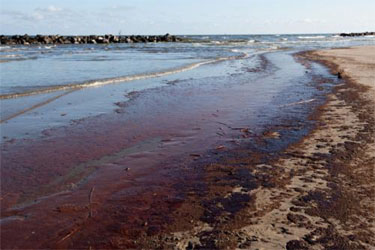Top 10 Endangered Places in the Southeast
The Southern Environmental Law Center (SELC) has released its third annual list of the top ten places in the South that face immediate, potentially irreversible damage in 2011.
This year’s list shows that the nation’s most urgent environmental issues are playing out in the Southeast, especially the way we produce and use energy.
“Our region is headed down a path that threatens to overwhelm the Southern landscapes we love–our mountains, rivers, coast, and rural countryside,” said Marie Hawthorne, SELC’s director of Development.
“Decisions made today about how we extract and produce energy will have consequences for decades to come. The key message behind our Top Ten list is that there is still time to save these special places—but we need to act now.”
[ Also Read: How to become a Green Governor ]Specifically, this year’s list covers current and potential impacts of offshore oil drilling on Alabama’s coast, mountaintop removal coal mining in Tennessee, coal-fired power generation in Georgia, fracking to tap natural gas in Virginia, and more.
“The South’s energy choices aren’t just affecting our own backyard,” said Hawthorne. “If our six-state region were a country, it would be the seventh largest emitter of carbon dioxide in the world.”
[ Also Read: Toyota Drives in to Improve the Air Quality ]Top Ten Endangered Areas in the South for 2011
The following endangered areas were chosen from among hundreds of special places that SELC is defending through its law and policy work in the six states of Virginia, Tennessee, North Carolina, South Carolina, Georgia and Alabama.
Alabama‘s Coast: SELC is leading legal efforts to strengthen oversight and regulation of offshore drilling, and to ensure that nothing like the disaster in the Gulf of Mexico is allowed to happen again.
Georgia‘s Cypress Forests: Fueled by an increase in demand for cypress mulch, timber companies are chopping down Georgia’s iconic wetland forests faster than they can recover.
Oconee River, Georgia: A proposed coal-fired power plant would siphon an average of 13.5 million gallons a day from the Oconee River, robbing downstream farms and communities that depend on this resource.
Pea Island National Wildlife Refuge, North Carolina: A short-sighted bridge replacement plan would turn one of the nation’s most important havens for waterfowl into a permanent highway construction zone.
Snowbird Mountains, North Carolina: An outdated highway expansion plan from the 1960s would cut four lanes of asphalt through stunning mountain terrain and would expose trout streams to acid-laden pollution.
Cape Fear Basin, North Carolina: A proposed cement plant near Wilmington would destroy 1,000 acres of wetland habitat and further pollute the Northeast Cape Fear River, which already suffers from mercury levels harmful to people and wildlife.
Santee River Basin, South Carolina: Despite available remedies, an old system of hydroelectric dams could be allowed to perpetuate decades of degradation to wetlands and wildlife habitat.
Cumberland Plateau, Tennessee: Mountaintop removal and other destructive coal mining practices threaten an ecosystem that is world-renowned for its rich biological diversity and rare species.
George Washington National Forest, Virginia: The film Gasland has exposed the impacts of hydraulic fracturing (or “fracking”), a method of natural gas extraction linked to the contamination of water supplies; fracking could be on its way to the Southeast’s largest public forest and the source of clean water for many Shenandoah Valley communities.
The Chesapeake Bay: SELC is assisting in overseeing the state and federal agencies charged with developing and implementing restoration plans for the Bay, which continues to suffer from pollution from air, land, and water.
[ Also Read: See African Cats, Save the Savanna ]For more detailed descriptions of each endangered area, you can visit www.southernenvironment.org/topten
The Southern Environmental Law Center (SELC) is a regional nonprofit conservation organization using the power of the law to protect the health and environment of the Southeast (Virginia, Tennessee, North and South Carolina, Georgia, and Alabama).




